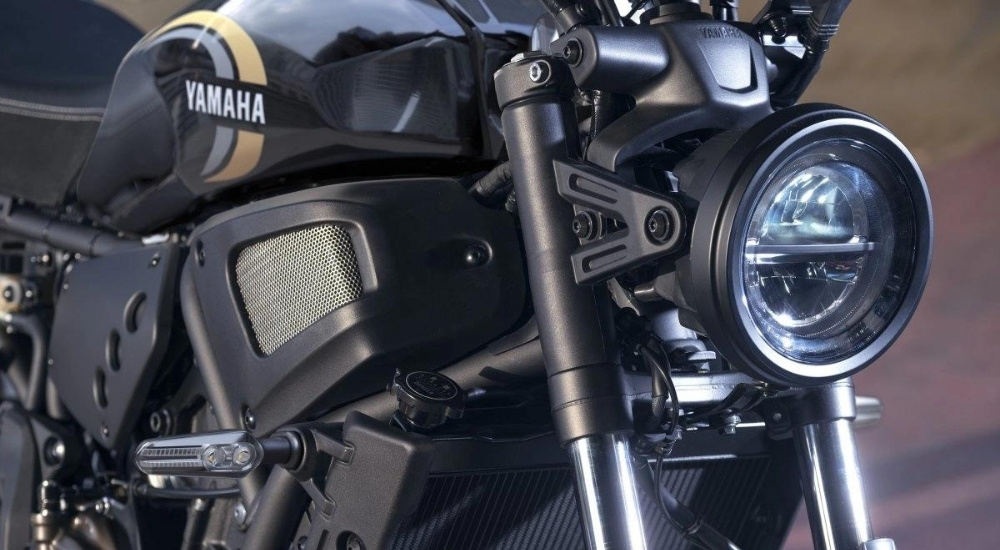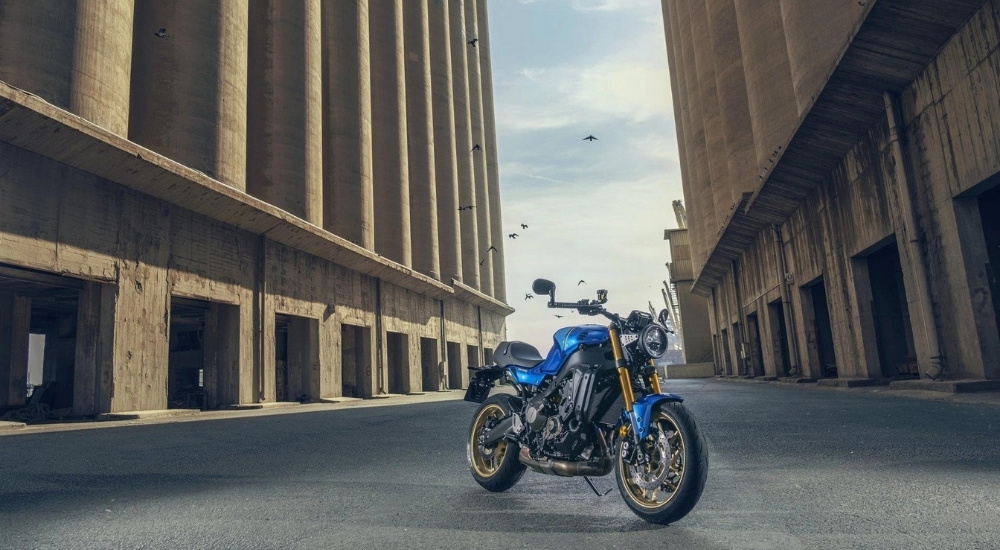Shopping a burgeoning market of used motorcycles for sale gives riders many unique opportunities. First-time riders can hone their skills without spending a fortune, while veteran riders can bring their bike dreams to life at a fraction of the sticker price. For some, it means venturing beyond a touring bike and adding a dual sport to their garage. For others, it’s about personalization and having the opportunity to build a custom bike using an icon like the Yamaha XSR as a blank canvas.
Yamaha’s XSR bikes are widely popular, but why? What makes these models so appealing? What is it about the XSR that draws so many riders to the saddle? In short, the XSR fuses nostalgia with modernity in a balance that offers a broad appeal that’s impossible to resist.
Studying the Old to Understand the New: Yamaha’s Approach to Design
The XSR700 and XSR900 bikes pay homage to Yamaha’s rich heritage in the motorcycle industry and showcase the manufacturer’s ingenuity and efforts to think outside the box. Classified as Sport Heritage bikes, the XSR Series models are neo-retro motorcycles that blend classic styling with modern features. While this isn’t a new concept by today’s standards, Yamaha managed the unthinkable in 2016 when it introduced the XSR Series. Even so, fully appreciating the XSR Series requires traveling further back in time to 2010, when the idea was born.
An Uncommon Approach
The motorcycle industry flourished in the new millennium as the world’s leading bike manufacturers introduced modern styling and cutting-edge technologies. However, while modernity was at the forefront of the industry, Yamaha recognized the growing demand for retro-inspired bikes. Riders were turning to older models, using them as blank canvases they could customize to their style and performance needs.
The concept of building a custom bike wasn’t new in the early 2000s, with many motorcycle manufacturers capitalizing on the age-old tradition by reviving old nameplates that inspired riders to bring their two-wheeled hot rod dreams to life. However, Yamaha chose another route altogether. Remaining true to its roots, Yamaha turned to the Japanese proverb, “Study the old to better understand the new” for inspiration.
Instead of watering down the segment with a modernized version of one of its discontinued models, Yamaha sat down and did its homework. The manufacturer looked to its past and studied models like the XS-1, SR400, and SRX600 to determine what made them popular. Then, Yamaha tasked its design team with developing a new lineup that blended the nostalgia of those bikes with modern features.
Balancing the Past and Present: The XSR’s Retro Style and Modern Features
As Yamaha studied its historically popular models, the manufacturer recognized several similarities in design and incorporated those details into the XSR Series. These elements, like the XSR’s exposed aluminum frame and components, the bold horizontal body lines, and the shape of the saddle, give the XSR models their retro aesthetic and reflect older, classic Yamaha models. The 2016 XSR models also feature a round speedometer, another nod to the bikes that define Yamaha’s illustrious racing history.
Today, newer XSR700 and XSR900 models continue to fuse the past and the present. Like the 2016 models, they’re instantly recognizable by their neo-retro aesthetic that stretches from the exposed aluminum frame to the custom lighting and stepped seat. The design is rugged and retro, but it’s also cutting-edge when you look beyond the silhouette.
Modern Details
Modernity in the XSR Series presents itself in several ways, some more obvious than others. The XSR’s lightweight, narrow frame with its sport-oriented geometry makes the bike incredibly versatile and engaging, whether cruising at highway speeds or navigating twisting backroads. The newest XSR900 features Yamaha’s lightest and strongest frame, courtesy of the manufacturer’s Controlled Fill die-cast technology. This cutting-edge system engineers frame sections that measure 1.7 mm, thin enough to ensure the XSR900’s agility and lightweight design.
Modernity is also at work behind the scenes with the XSR’s traction control, antilock brakes, and quick-shifter. It’s prominent in the engine’s variable valve actuation, which defies every expectation of a small displacement engine. It optimizes torque from low to higher RPMs, delivering on-demand power and exceptional responsiveness. Newer models offer more obvious modernity, from the LED lighting to the XSR900’s full-color 3.5-inch display.
Changing the American Landscape: The XSR Series Impact
The stylistic appeal of the XSR Series bike is undeniable, but Yamaha treats riders to far more than a blast from the past by incorporating modern technologies and features. This approach gives the XSR Series irrefutable significance.
Consider the era in which the XSR Series concept was born. It was a time when modern styling and advanced technologies defined the industry. Yet, even then, many riders preferred integrating those new technologies on older, retro bikes. With the XSR Series, Yamaha delivers this combination and fusion between past and present straight from the factory floor.
The XSR Series is a testament to Yamaha’s ingenuity and pioneering spirit. Bikes like the XSR700 and XSR900 prove that Yamaha is keenly aware of industry trends and riders’ needs but refuses to cut corners to answer and satisfy those needs. Instead, the XSR Series isn’t a revived nameplate but a reflection of what Yamaha does best. The XSR Series are race-inspired bikes with a classic design and modern features that don’t require riders to compromise performance for style or nostalgia for modernity.
Because of this, the Yamaha XSR Series has a vast community of riders who appreciate the culture behind the bike and its endless options for customization. This community and the XSR Series’ design as a blank canvas also means it has robust aftermarket support that makes personalizing the XSR700 and XSR900 straightforward. You can find riders around the world who have customized their bikes and are happy to share their experience, tips, and tricks with others. You’ll even find companies that build custom components for the XSR Series models and offer everything from custom saddles and fenders to handlebars, lighting kits, and beyond.
Refusing to Settle: The XSR Series Continues to Evolve
It’s incredibly easy for a motorcycle manufacturer to look at the success of a bike and call it good. We see this across the industry with many bikes going years and, in some cases, decades before being updated with new features, styling, and technologies. However, Yamaha continues to be the exception to the norm, adding appeal to models like the XSR Series.
Yamaha refuses to settle or rest on its past success, proving as much with the XSR Series and its evolution since 2016. The manufacturer updated the XSR Series in 2020, only four years after its debut. Determined to make significant improvements to the XSR Series’ design, Yamaha returned to its roots and racing heritage for inspiration, studying the past to understand the new.
Using its iconic race bikes for inspiration, Yamaha used the MT-09 as the foundation for the updated XSR900. The bike features a larger engine, a redesigned frame to improve rider comfort and control, an exclusively designed seat and subframe, and a longer wheelbase. The combination gives the XSR its distinct handling while ushering it into a new era of neo-retro powerhouses.
Today, the unique balance of past and present makes the XSR Series incredibly appealing. Riders know an XSR700 or XSR900 can be treated like a blank canvas fully customizable to their riding and style needs. Moreover, they appreciate how the bikes pay homage to Yamaha’s rich history and ingenuity, showcasing how the manufacturer goes above and beyond to ensure the XSR Series evolves and aligns with riders’ needs without requiring them to compromise or settle for anything less than extraordinary.






